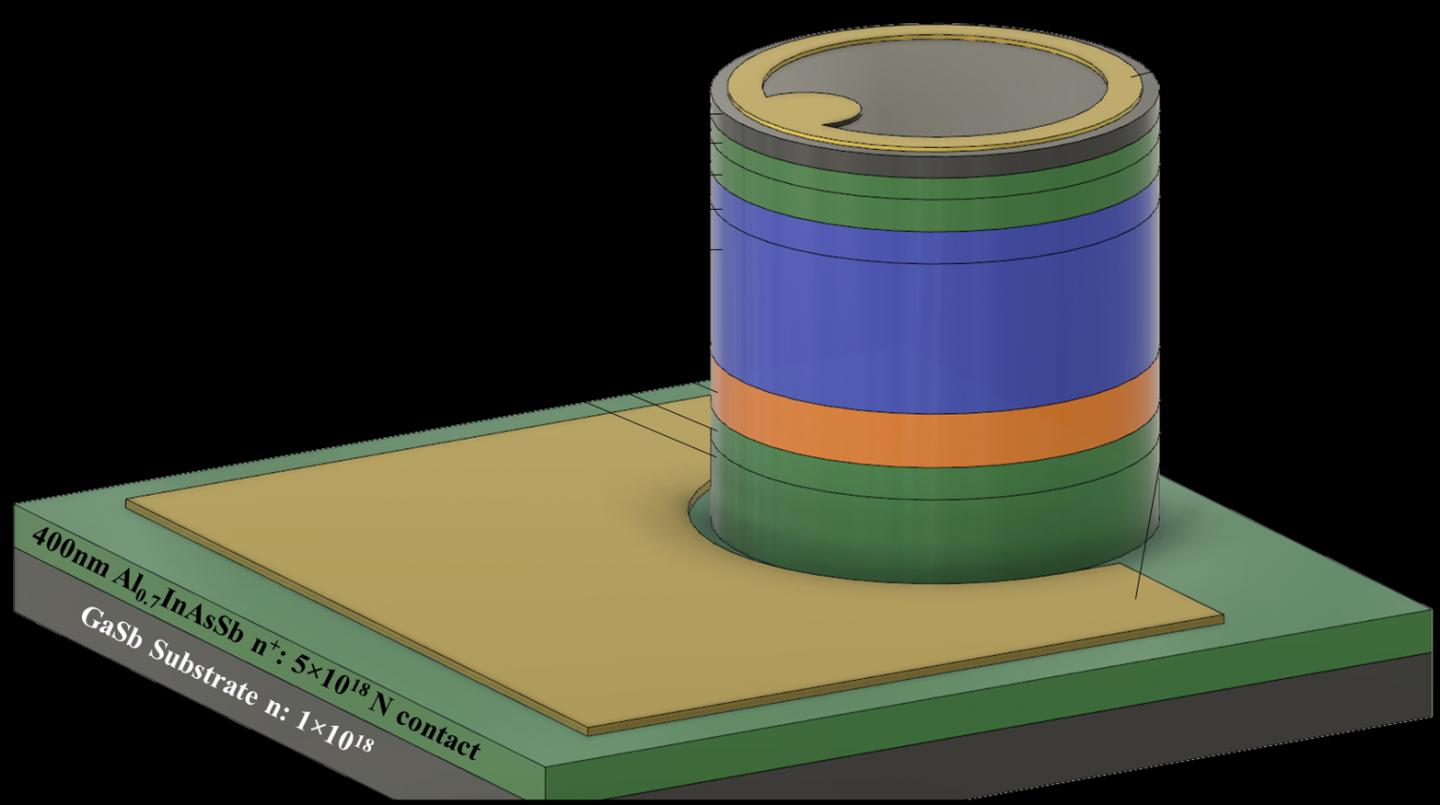AlInAsSb/GaSb Photodiode breaks LiDAR performance record

US research team's fabrication process achieves long-wavelength sensitivity, ultra-low noise and design flexibility
Electrical and computer engineers at the University of Virginia (UVA) and University of Texas-Austin have developed an avalanche photodiode that achieved record performance and has the potential to transform next generation night-vision imaging and Light Detection and Ranging (LiDAR) receivers. For LiDAR, the team's low-noise, two-micrometer avalanche photodiode enables higher-power operation that is eye-safe.
The paper, 'Low-noise high-temperature AlInAsSb/GaSb avalanche photodiodes for 2-μm applications' was published May 18, 2020, in Nature Photonics.
This breakthrough comes from a long-standing collaboration between Joe Campbell, Lucien Carr III Professor of electrical and computer engineering at UVA, and Seth Bank, Cullen Trust Professor at UT-Austin. Andrew Jones and Stephen March also contributed to the research. The team's work was funded by the Defense Advanced Research Projects Agency and the Army Research Office.
The team used the novel optical and electrical characteristics of a digital alloy created in Bank's Laboratory for Advanced Semiconductor Epitaxy. Bank employed MBE to grow the alloy, composed of aluminium, indium, arsenic and antimony. The alloy combines long-wavelength sensitivity, ultra-low noise, and the design flexibility that is needed to achieve low dark currents, which is not available with existing low-noise avalanche photodiode materials technologies.
"Our ability to control the crystal growth process down to the single atom-scale enables us to synthesise crystals that are forbidden in nature, as well as design them to simultaneously possess the ideal combination of fundamental material properties necessary for efficient photodetection," Bank said.
The team says that this avalanche photodiode would be ideal for making compact, high-sensitivity LiDAR receivers. Many LiDAR applications, such as robotics, autonomous vehicles, wide-area surveillance and terrain mapping, require high-resolution sensors that can detect greatly attenuated optical signals reflected from distant objects. Eye safety has limited the adoption of these next-generation LiDAR systems, however, because the requisite higher laser power poses an increased risk of eye damage.
"The 2-micrometer window is ideal for LiDAR systems because it is considered eye-safe and extends the detection reach." Campbell said. "I can envision our avalanche photodiode impacting numerous key technologies that benefit from high sensitivity detectors."
This work is being transferred to IQE for foundry services and Lockheed Martin to develop photodiode arrays with readout circuitry. Future work at the two universities will concentrate on achieving low-noise operation at near-room temperatures, extending the operating wavelengths further into the infrared, and pushing the sensitivity to the single photon level.


































